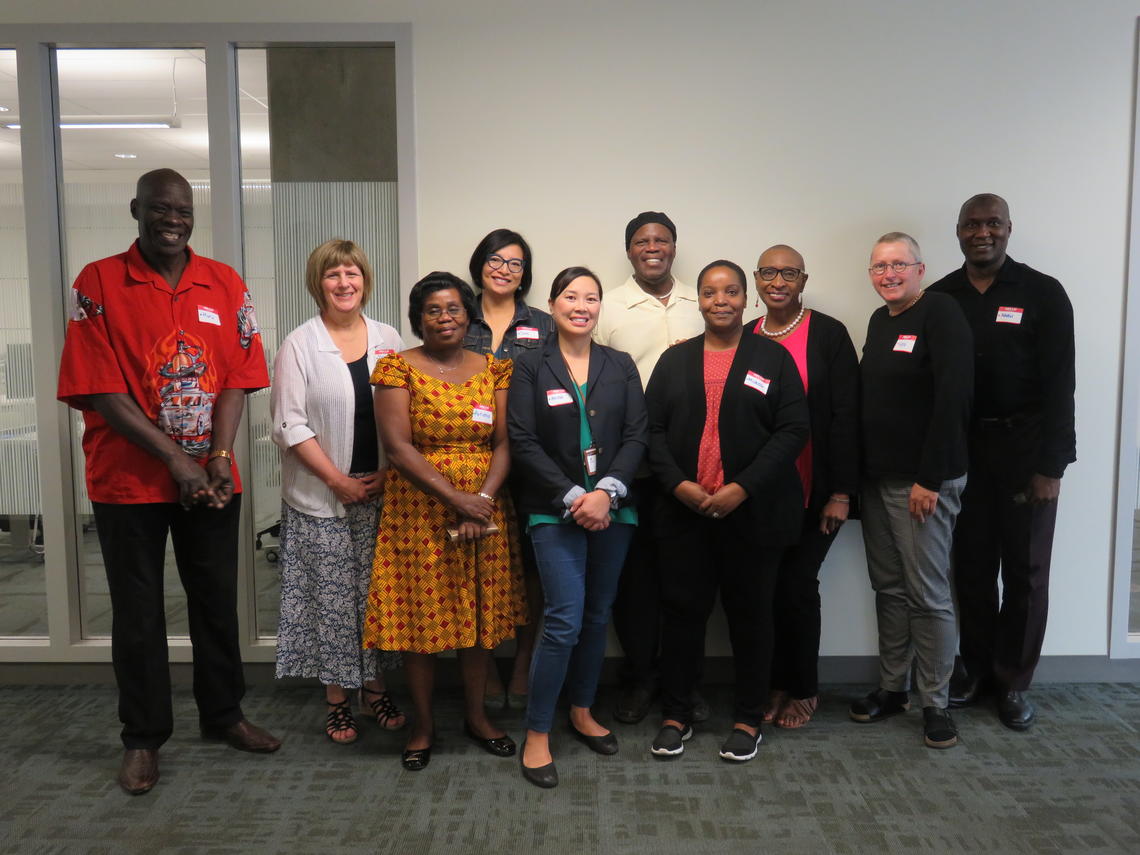Nov. 30, 2017
Public health nursing researcher exploring Canadian immigrants’ experiences with HIV/AIDS stigma

The Newcomer, HIV, Immigration, Treatment Engagement, and Stigma in Canada Community-Based Team
Añiela dela Cruz started her research career examining how the perception of HIV/AIDS changes as people cross borders and its implications for transmission and infection. As assistant professor in the Faculty of Nursing and member of the O’Brien Institute for Public Health at the Cumming School of Medicine, she is now currently focused on stigma experienced by immigrants who are living with HIV who migrate and settle in Canada.
Her current research examines the health, social, and societal contexts of immigrants living with HIV in Canada and identifying ways to reduce health and social inequities.
- Read more in the Calgary Journal article “Why African, Black and Caribbean Communities struggle with HIV/AIDS stigma in Canada.”
dela Cruz (BN’98) is part of a community-based research team from the University of Calgary and University of Alberta with collaborators from British Columbia, Alberta, Saskatchewan, Ontario, and Nova Scotia, who are all working together to better understand the experiences of immigrants living with HIV in Canada.
In 2015, the Newcomer, HIV, Immigration, Treatment Engagement, and Stigma in Canada (NewHITES) Community-Based Research Team started a pilot study to look at HIV-related stigma among African immigrants living with HIV in Alberta. That work set the foundation for a new study around African and Caribbean immigrants living with HIV in Canada and their internalized and experienced stigma during the process of migration and settlement.
Gaps and inconsistencies during mandatory HIV-screening in immigration exams
As part of the Canadian immigration application processes, mandatory HIV screening has been in place since 2002. As part of their upcoming study, the NewHITES team is looking at people's experiences of this screening in the Canadian Immigration Medical Examination.
Preliminary results show some inconsistencies in the way people experienced that screening in the areas of informed consent, pre-HIV test counselling, post-HIV test counselling and referral to health-care services or follow-up care. This is significant because gaps in the process are related to how immigrant applicants are counselled to access health and social care in the event they are indeed successful in migrating to Canada.
“It seemed that people were experiencing stigma during these mandatory immigration exams and not getting connected to services during the migration and settlement process,” she says. “We know that people who are engaged within that continuum of HIV care cascade will do well - physical health-wise and socially.
“We also know that if there is an interruption in that cascade of care, people will have poorer social health and outcomes. You’ll find people live in social isolation or are marginalized and not able to have regular employment because they’re too afraid to be engaged in care.”

Añiela dela Cruz, PhD, MSc, RN, Assistant Professor
Goal to better support people and newcomers who are living with HIV in Canada
dela Cruz says the other huge implication around this inconsistency is if someone doesn’t know their status and are being tested for HIV and not informed.
“It’s a life-changing diagnosis,” she says. “If you work with people living with HIV and ask about their experiences of getting their positive diagnosis, it’s very shocking to say the least. It’s a recurring theme to hear from our participants that ‘I wish I was told I have cancer, it would be easier - it would be easier to tell my family or hold my job.’ It’s that profound.”
dela Cruz says the long-term aim with the group’s research is to explore new approaches in providing HIV prevention, care, and support services for this newcomer population. This study will contribute important knowledge in understanding the intersections between immigration policies and practices, and the ways in which these contribute to stigma.
“We’re looking at HIV stigma in the context of migration and settlement and the other layer is immigration process and policies,” she says. “Once we have that info, we can start planning for an intervention. That could be things like making recommendations to the immigration physician with policies and practices. The goal is to have programs that better support people and newcomers who are living with HIV in Canada.”
90-90-90: Global targets for ending the AIDS epidemic
December 1 marks Worlds AIDS Day which started in 1988 and is dedicated to raising awareness of HIV/AIDS. 90-90-90 is the ambitious global target to end the AIDS epidemic set out by UNAIDS. It outlines that by 2020, 90 per cent of all people living with HIV are diagnosed; 90 per cent of all people with diagnosed HIV infection are engaged in treatment; and 90 per cent of all people receiving antiretroviral therapy will have viral suppression.

